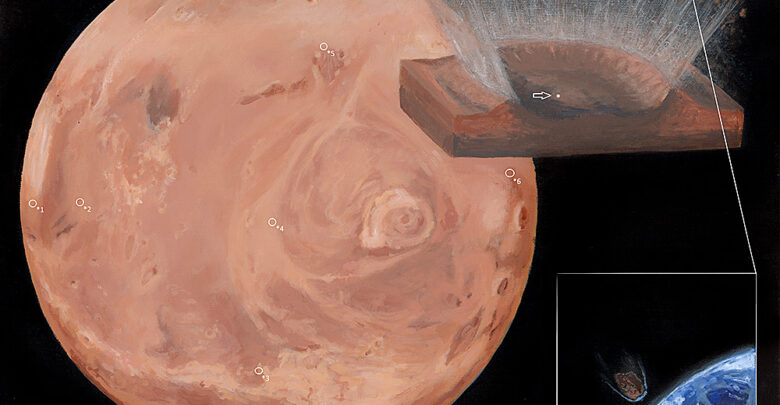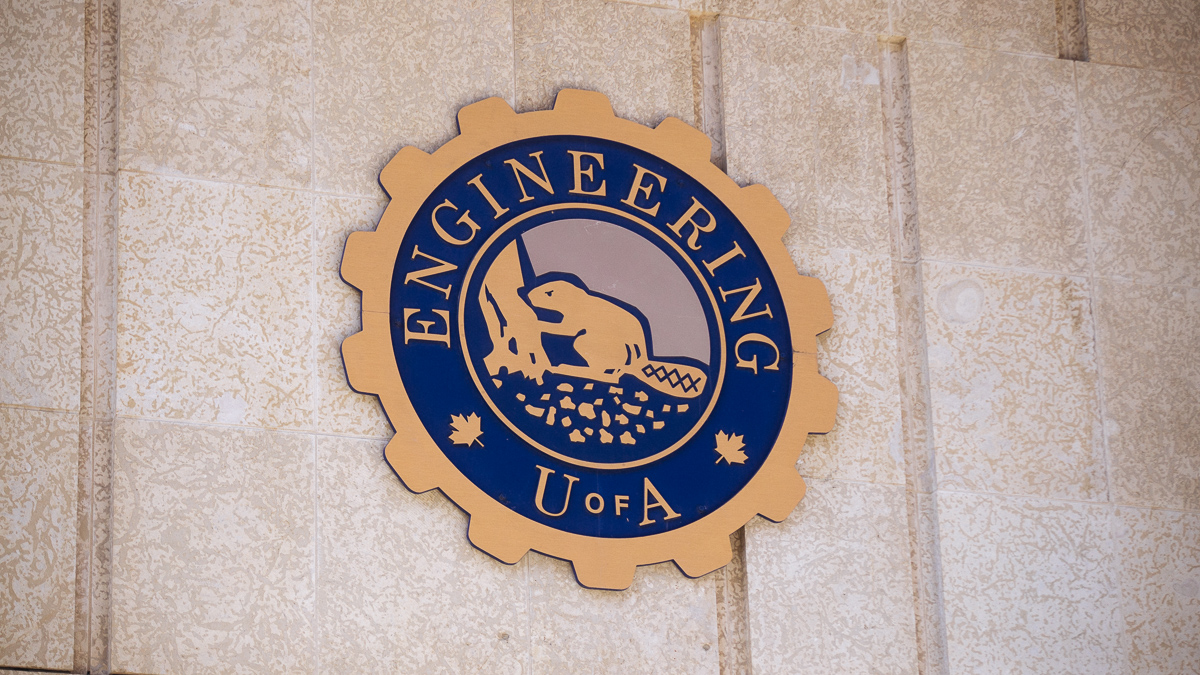 Maria Dirks
Maria DirksResearchers at the University of Alberta have helped develop a method to pinpoint the craters from which many Martian meteorites originate. Of the tens of thousands of meteorites found on Earth, researchers have identified only a couple hundred from Mars. The study identified impact craters of approximately 200 meteorites.
“You have an asteroid that strikes Mars, causing an explosion, and the rocks near the impact site are accelerated fast enough to escape Mars’ gravity,” Chris Herd, professor of earth and atmospheric sciences at the U of A, said. After rocks eject, they orbit the sun, potentially cross Earth’s orbit, and may fall to the ground as meteorites.
“What’s left behind on the surface of Mars is a crater. So what we’ve been able to do in our study is link specific meteorites from Mars to specific craters that they were derived from through this impact ejection process,” Herd said.
Researchers could better understand Mars’ stratigraphy by analyzing craters before and after impacts. Stratigraphy is a branch of geology that deals with the study of rock layers.
Researchers typically use stratigraphy when studying sedimentary and layered volcanic rocks. According to Herd, “we don’t have all the data to be able to do this yet. But the potential is there to piece back together where those rocks were in the stratigraphy.”
New models allow researchers to map the origins of the meteorites
Identifying craters depends on understanding the physics of how the rocks were ejected from Mars, Herd explained. “We’re reading that record of the shock in the meteorite and linking it to the modelling.”
Based on their model, Herd explained different rock fragments experience varying pressures during ejection. Some experience higher pressures, while others are compressed for varying durations, which they refer to as “dwell time.”
According to the study, this model allowed researchers to make determinations about what range of sizes the craters could have been. Using candidate craters, researchers identified specific craters that match a meteorite and other rocks ejected from it.
Each year, the red planet encounters a high volume of asteroids
Mars experiences a large amount of impacts to its surface every year. According to findings from the North Aeronautics and Space Administration’s (NASA) Mars InSight Lander, approximately 180-260 impacts occur yearly on Mars.
“There’s like, 90 million impacts on the surface of Mars,” Herd said. He explained that because the impactor is destroyed upon impact, it’s impossible to know what caused each one.
“Mars sits closer to the asteroid belt than the Earth does. It’s likely an asteroid [gets] knocked off course and ends up hitting the surface of Mars. That’s been happening for billions of years.”
Even with the amount of impacts Mars faces every year, Martian meteorites are still relatively rare on Earth, according to Herd.
“They’re the only samples we have from Mars until we actually go to Mars and collect samples and bring them back,” Herd said.
Herd co-authored his study with 11 others, including U of A graduates Jarret Hamilton and Alex Sheen. Another contributor was Erin L. Walton. Walton was a professor at MacEwan University who passed away in September 2022. “She was a big part of getting this study going,” Herd said.
As for the future of this research, Herd said he hopes that the groundwork the study has laid out can become a framework for future research.
“I really hope that it revolutionizes how we approach these meteorites. That it’s going to change how we look at them and how we study them.”




